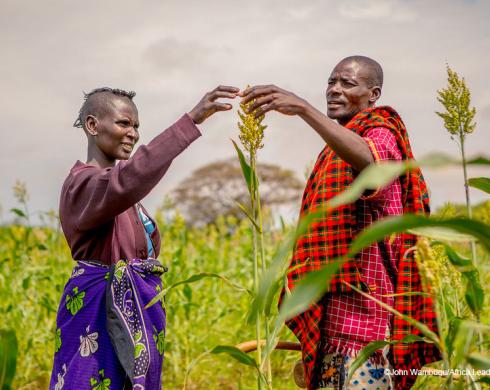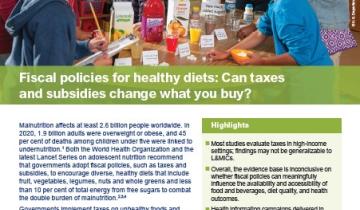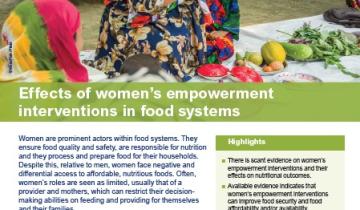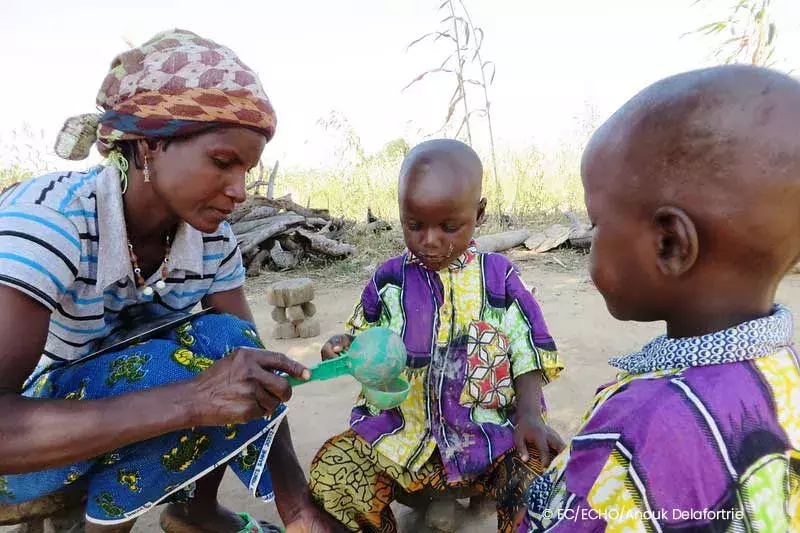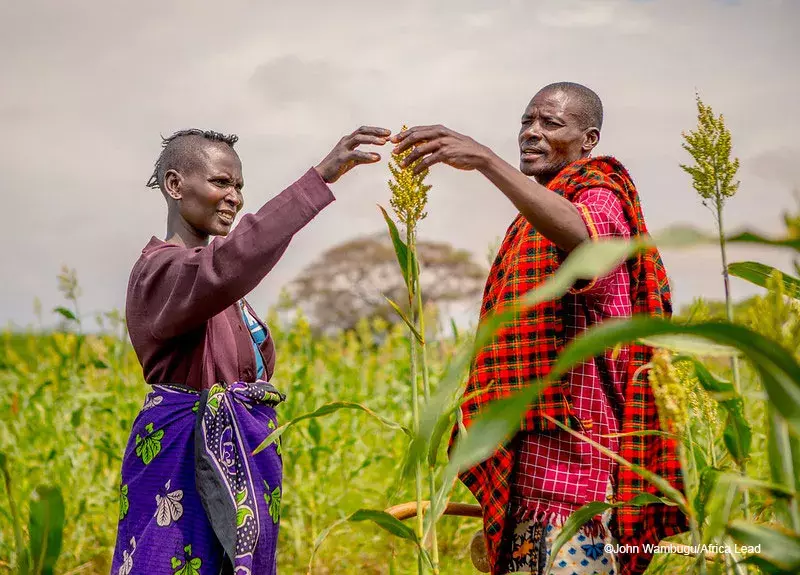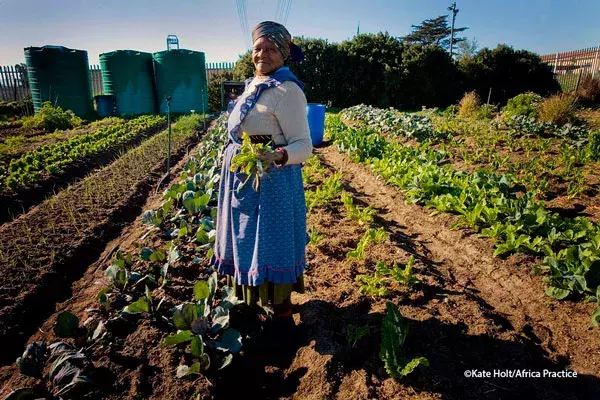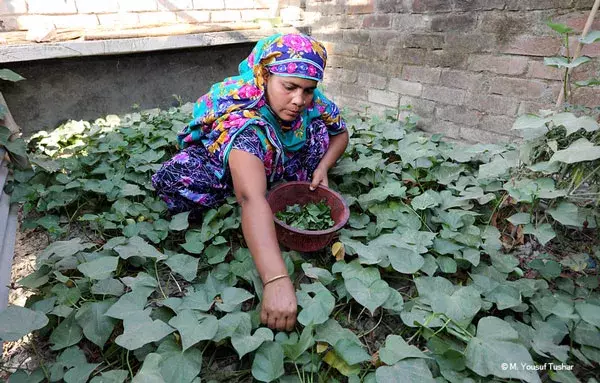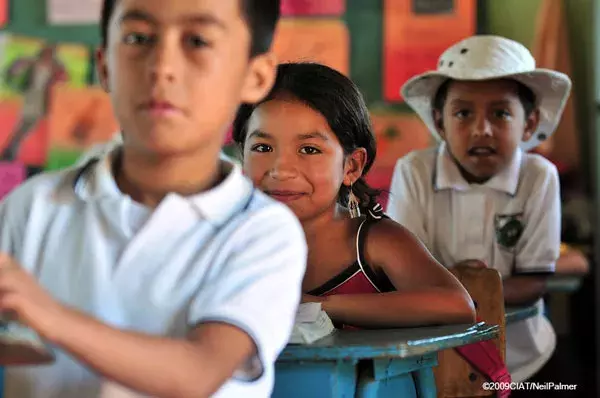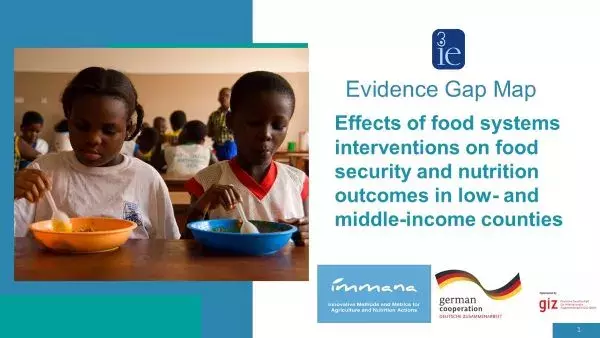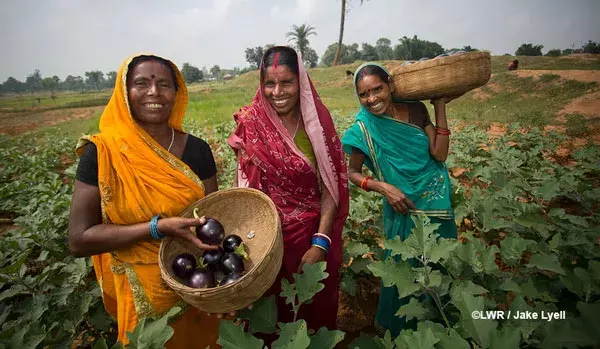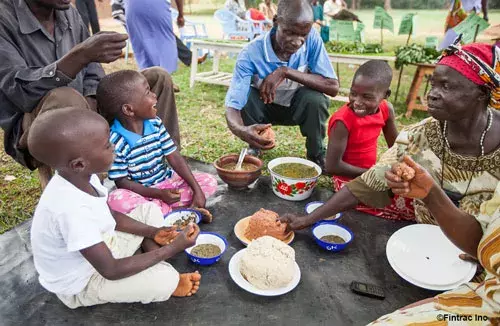Food Systems and Nutrition Evidence and Gap Map
To address the challenge of malnutrition and food insecurity, decision-makers need to understand what evidence exists on various interventions. 3ie’s first living evidence and gap map (E&GM) includes the largest collection of high-quality research on food systems interventions in low- and middle-income countries. With support from BMZ through GIZ’s “Knowledge for Nutrition” program, we have monitored the available evidence and regularly added studies through 2021-2024 to ensure the E&GM remains a useful and current tool for our users.
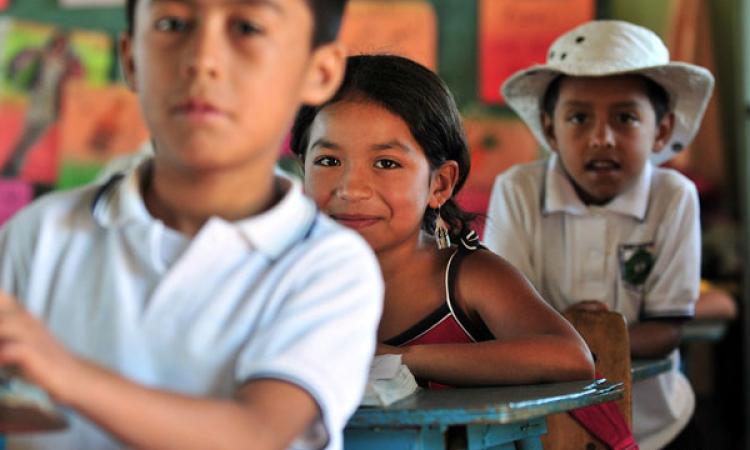
Overview
Food systems are crucial to achieving most of the 17 Sustainable Development Goals (SDGs), as well as multiple other goals and commitments, such as those on climate change. What we need is science-driven food transformation and research will continue to play a vital role in this. 3ie ambitious living evidence-mapping process continued for three years. The project will continue through September 2024. Our first living evidence and gap map (E&GM) includes the largest collection of impact evaluations and systematic reviews on food systems interventions in low- and middle-income countries. Our Food Systems and Nutrition Evidence E&GM shows where evidence is available and where new research is needed to fill evidence gaps regarding the impacts of food systems interventions.
E&GM Findings
Making sense of a vast and growing literature

Our E&GM includes over 3000 studies and presents a rich body of evidence, including the latest research, in the fast-growing field of food systems impact evaluations. It reports on evidence from all key areas and intervention types and identifies potential primary and synthesis evidence gaps. We regularly publish summaries of how the literature has changed and provide insight into the development of evidence gaps and clusters. We are also leveraging it to produce a series of evidence synthesis products.
Since the continuous update process started, we have added 1,217 impact evaluations and systematic reviews to our already large evidence mapping project (containing 2,035 studies at its launch in January 2021). Although this represents a 60 percent increase, we find that the rate of expansion in the evidence base has decreased since 2019. After reviewing the studies added to the map for the mid-term report, we determined that none of the previously identified evidence gaps have been filled. Since then, the evidence base of some of these has grown, especially for women’s empowerment outcomes, which now are measured in 128 studies. In addition, few high- or medium-confidence systematic reviews have been published during the update period, meaning that this evidence base is rapidly becoming out of date.
The map has been expanded. We have added a filter for ‘year’ across the top of the map, interventions and outcomes considering gender transformative approaches and social protection interventions. Read the brief, full report, mid-term report and notes on the December 2021, April 2022, August 2022, January 2023, July 2023, November 2023, May 2024 and July 2024 updates.
Findings from the original map
In the original E&GM (covering January 2000 – September 2020), evaluations disproportionally considered supplement provision (20%); fortification (16%); direct food provision (11%); and peer support and counseling targeting consumer behavior (7%). No or few evaluations assessed advertising regulations, food waste education programs, food packaging, governmental price manipulations, and interventions supporting women’s decision-making or measured women’s empowerment outcomes.
Latest findings
The map has now been updated in eight instances—December 2021 (covering September 2020-June 2021), April 2022 (covering July 2021 – January 2022), August 2022 (covering January – April 2022), January 2023 (covering May 2022 – December 2022), June 2023 (covering January 2023 – April 2023), and November 2023 (covering May 2023-July 2023), May 2024 (covering August 2023-October 2023) and July 2024 (covering November 2023-January 2024). We have also published a mid-term report, summarizing the evolution of the evidence base from January 2021 to January 2023.
In the latest update, we added 315 new studies to the map, including three new high-confidence systematic reviews. The most common interventions identified for the update were nutrition classes, professional services related to nutrition and conditional and unconditional cash transfers. Overall for the E&GM, the most common interventions are still provision of supplements, classes, fortification and direct provision of food.
Studies added to the E&GM
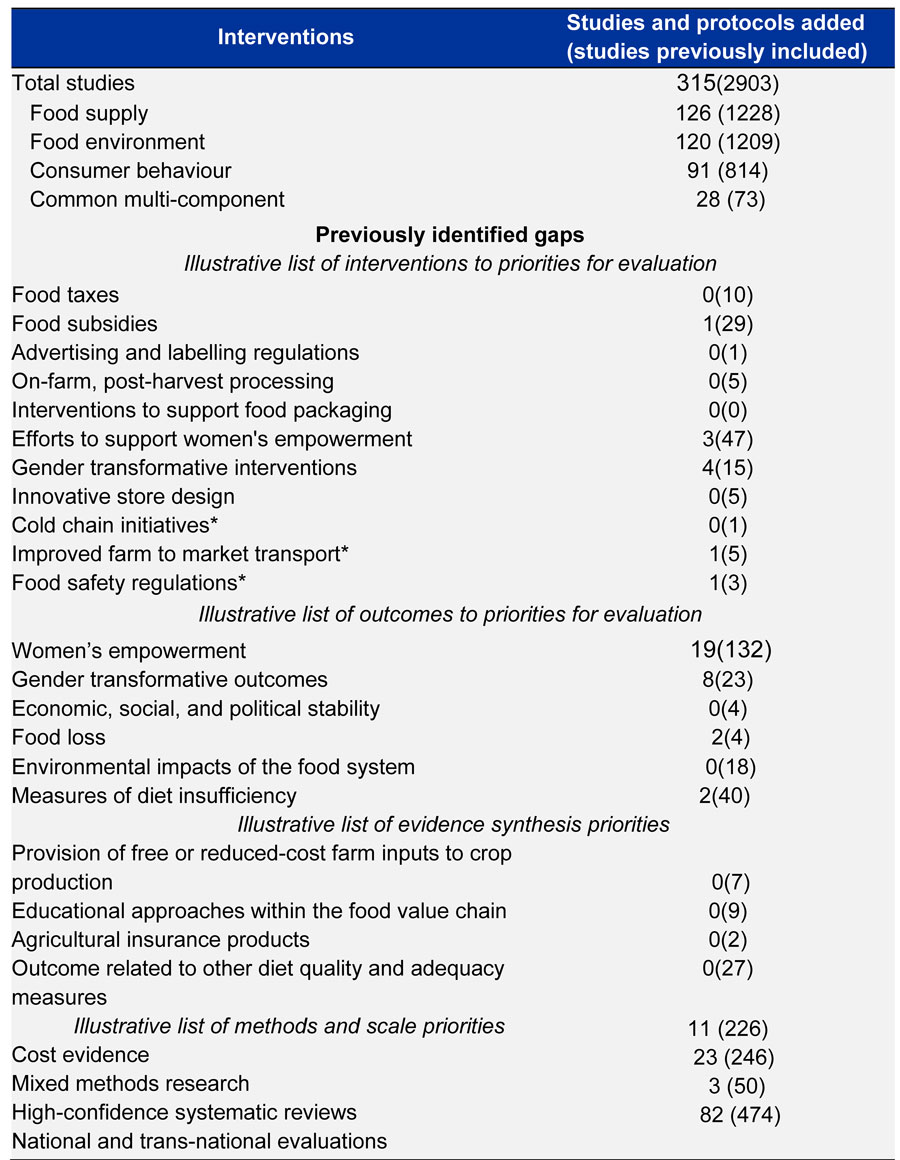
*These represent new priority areas identified through our mid-term report
Benefits of a living E&GM
Because this is a living evidence-mapping process, as new policy priorities develop in the field, we are able to rapidly identify studies evaluating relevant interventions and make these easily accessible to decision makers. This ensures that the most up to date evidence is available. We are also able to highlight the evolving evidence needs of the field through our regular stocktaking of the distribution of the evidence.
Leveraging the E&GM
Extending the use of the living E&GM
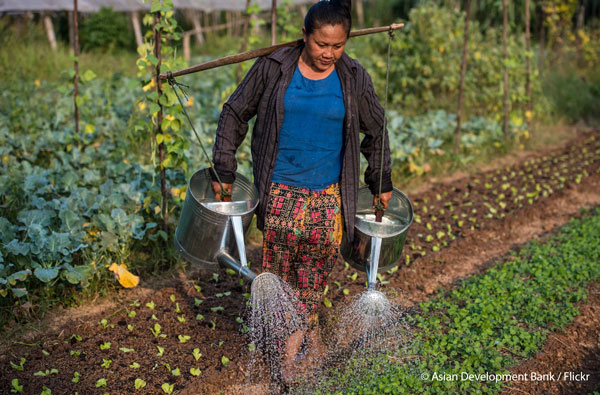 To fill some of the key gaps identified through the mapping process, 3ie has produced additional synthesis products related to women’s empowerment interventions, long-term effects of food systems interventions, and the use of fiscal policies to support a healthy diet. Our latest and upcoming review focuses on the effects of information, capacity strengthening, and behaviour change (ICSBC) interventions on food security, nutrition, and resilience. These synthesis products take less than half the time required forr traditional systematic reviews because we are able to leverage the E&GM. Read more about them below.
To fill some of the key gaps identified through the mapping process, 3ie has produced additional synthesis products related to women’s empowerment interventions, long-term effects of food systems interventions, and the use of fiscal policies to support a healthy diet. Our latest and upcoming review focuses on the effects of information, capacity strengthening, and behaviour change (ICSBC) interventions on food security, nutrition, and resilience. These synthesis products take less than half the time required forr traditional systematic reviews because we are able to leverage the E&GM. Read more about them below.
Evidence on the effects of information, capacity strengthening, and behaviour change (ICSBC) interventions on food security, nutrition, and environmental food system resilience in Sub-Sahara Africa
Sub-Saharan Africa (SSA) remains one of the most food-insecure regions. Building resilient food systems in SSA to withstand shocks such as climate change and environmental risks and crises is essential for mitigating their impacts and ensuring food security and nutrition. ICSBC interventions have the potential to increase food system resilience by equipping food system actors with the technical resources and capacities they need to cope with climate change and environmental risks and shocks.
In this rapid evidence assessment, commissioned by the German Institute for Development Economics (DEval), we draw on the latest update of the living E&GM, which includes 96 quantitative impact evaluations across 35 countries on the effects of ICSBC interventions on food security and nutrition outcomes. Out of these 96 studies, the FSN E&GM highlights 64 studies implemented in SSA, providing an opportunity for evidence synthesis on the effectiveness of ICSBC interventions in this region. Our research aims to fill the evidence gap through a mixed-method rapid evidence assessment, including both experimental and quasi-experimental impact evaluation and qualitative evaluations.
Evidence on women’s empowerment within the food systems
Findings: There were ten impact evaluations of interventions to support women’s empowerment within the Food Systems and Nutrition Evidence and Gap Map. Overall, these interventions generally had positive impacts on food security and food affordability and availability. Evidence from qualitative work suggests that women’s empowerment interventions best influence nutritional outcomes when adopting gender-transformative approaches and addressing gender and social norms.
Implications: Policy-makers should consider improving women’s social capital so they can better control and decide how to feed their families. Qualitative evidence suggests that multi-component interventions seem to be more sustainable than single-focus interventions, especially when they combine a livelihoods component (asset transfer or financial services) with behavioural change communication. Researchers need to address issues with inconsistent data and reporting, particularly relating to seasonal changes, social norms and time taken between rounds of data collection in order to implement high-quality evaluations. Future studies could further contribute to the evidence base of gender-transformative approaches by carefully considering contextual norms and avoiding stereotyping women into pre-decided roles which may perpetuate social norms.
Read the brief
Evidence on taxes and subsidies to support a healthy diet
Findings: We identified 49 impact evaluations and two systematic reviews through an additional systematic search that extended beyond the Food Systems and Nutrition Evidence and Gap Map. Unfortunately, these represented only 24 unique intervention-outcome-population combinations due to the repeated evaluation of the same taxes. We found that taxes on unhealthy foods may decrease the purchases of unhealthy foods, but this effect was driven by a single, high risk of bias study. Impacts on diet, health, and well-being were rarely considered, so conclusions could not be reached. However, we did find evidence that awareness of the health-based justifications for the taxes and the health consequences of consuming such foods may facilitate the impacts of these interventions.
Implications: Tax and subsidy policies aimed at improving diets should incorporate information campaigns on health benefits and health risks associated with certain food and beverage consumption. For tax policies, exposure to health information may amplify the signaling effects of taxes and reduce avoidance behaviors, such as cross-border shopping. Future evaluations of fiscal policies should diversify data sources to better understand the impact on diet and health outcomes. Future research should also use evaluation design strategies that account for confounding and independence from other programs or events that may occur during the implementation period.
Read the brief
Evidence on long-term outcomes of food systems interventions
Findings: We identified 78 impact evaluations on the long-term effects of food systems interventions on food security and nutrition outcomes in low- and middle-income countries. This comprises four percent of the 2,019 impact evaluations in our Food Systems and Nutrition Evidence Gap Map. The primary research objective of this was to identify and describe the available evidence on the effects of food systems interventions 10, or more, years after their inception. The number of identified impact evaluations generally declines as the length of the study period increases. We find 1,076 studies reporting on the outcomes of an intervention a year or less after an intervention started, 533 studies reporting on outcomes between two and four years after intervention inception, and 208 studies between five and nine years.
The Department for Evaluation at the Norwegian Agency for Development Cooperation (Norad) funded this REA to promote learning of what works in the long-run and ensure easy access to evaluative findings on long-term effects in food security.
Implications: Due to the highly variable nature of the evidence base, policymakers should avoid concluding that agricultural interventions do not work in the long-term and maintain a state of equipoise. Intervention effects ranged widely and several interventions were found to be successful in specific local contexts. With regards funders and implementers, project design should consider the possibility of adverse events from agricultural interventions, such as inappropriate fertiliser use or increased inequality.
Read the report
Evidence on the effects of food systems interventions on women’s empowerment
Findings: This rapid evidence assessment (REA) synthesizes and appraises the available evidence on the impact of food systems and nutrition (FSN) interventions on women's empowerment. The analysis utilized the Food Systems and Nutrition Evidence and Gap Map (E&GM) initially published in 2021. The REA included 44 quantitative studies, nine linked quantitative papers, 62 qualitative evaluations, and 432 descriptive qualitative papers covering 42 programs in 19 countries. The most examined interventions are those related to the food supply chain, followed by consumer behavior and food environment interventions. Meta-analyses revealed a small yet statistically significant positive effect of several FSN interventions on some women's empowerment outcomes, particularly from food supply chain interventions, which demonstrated moderate effects on collective action, leadership, empowerment indices, and access to economic resources. Consumer behavior interventions also showed positive impacts on economic resource access and decision-making.
Implications: Policymakers and implementers should leverage the positive effects of FSN interventions to empower women and adopt a holistic, gender-transformative approach. FSN interventions should address gender-restrictive norms, include women’s active participation, and consider vulnerabilities such as age and poverty. More evidence is needed on consumer behavior and food environment interventions, with a focus on underexplored outcomes and underrepresented regions. Future research should employ rigorous methods and longer follow-up periods to capture the slow change of gender norms over time. The existing analyses focus on the effects of women's empowerment interventions on food security outcomes. However, by transforming the food systems towards higher levels of gender equality, FSN interventions have the potential to contribute to women's empowerment. We are working on a rapid evidence assessment to complement and build on the body of evidence covered by 3ie's living E&GM.
Read REA summary report | Read policy brief | Read learning brief | Read findings blog | Read protocol
Watch our webinar on ‘Filling knowledge gaps to transform the food system’ which brought together experts from GIZ, EAT Forum, IFPRI, Bill & Melinda Gates Foundation, and Centre for Global Child Health. The panel focused on the experience in navigating the evidence base within the field, the types of evidence needed, and how the research community can better respond to the evidence needs of policymakers and implementers.



